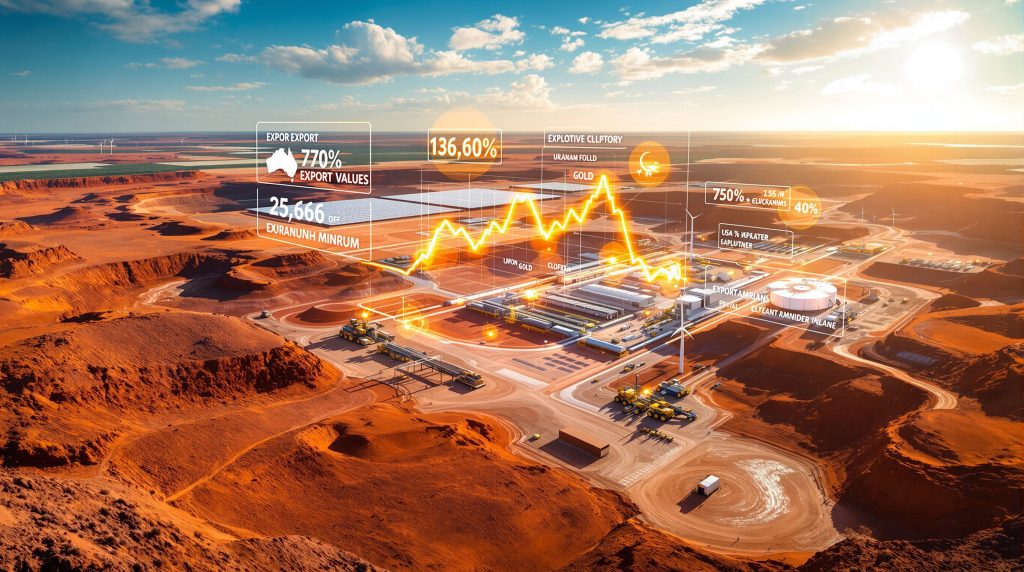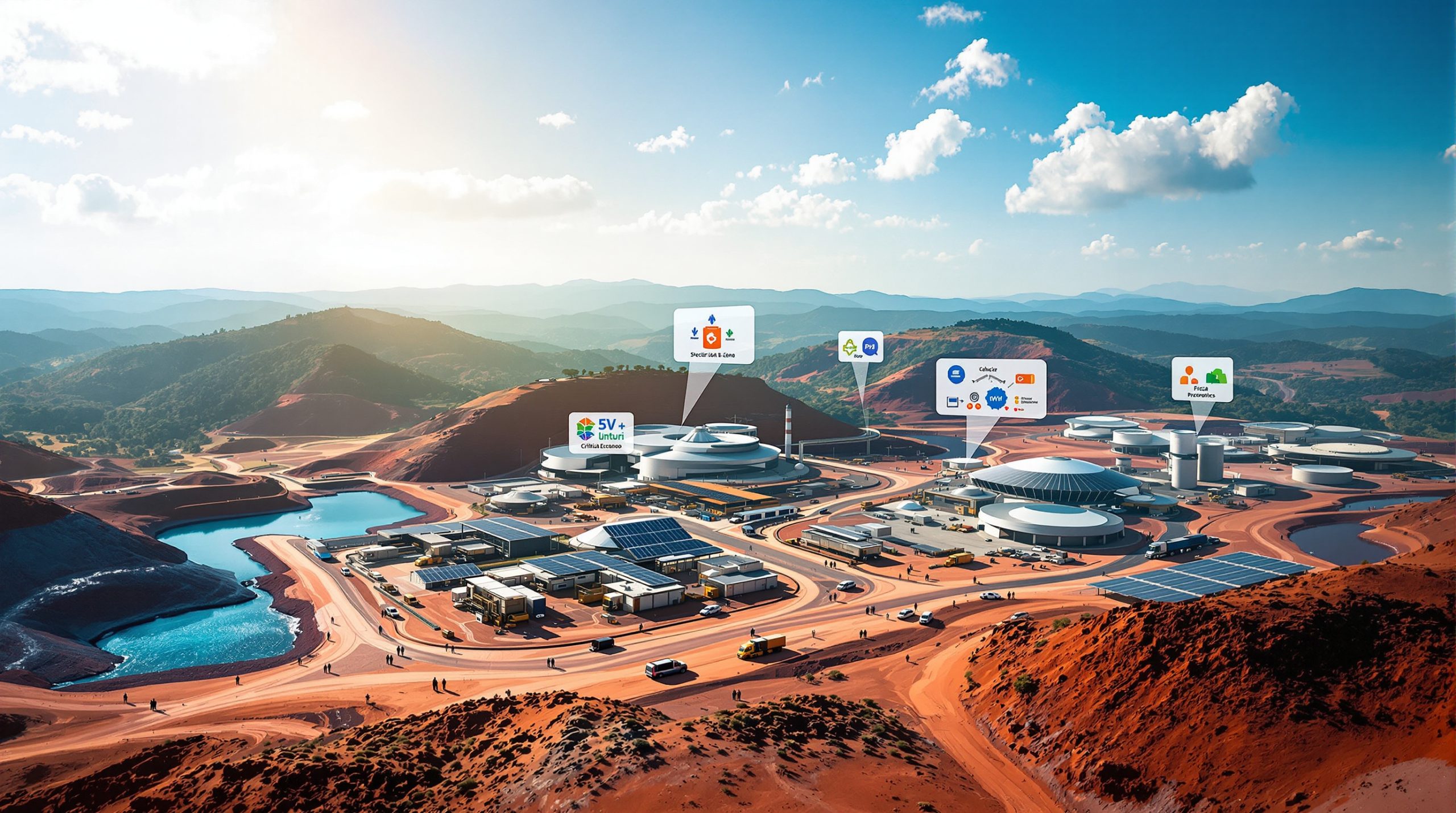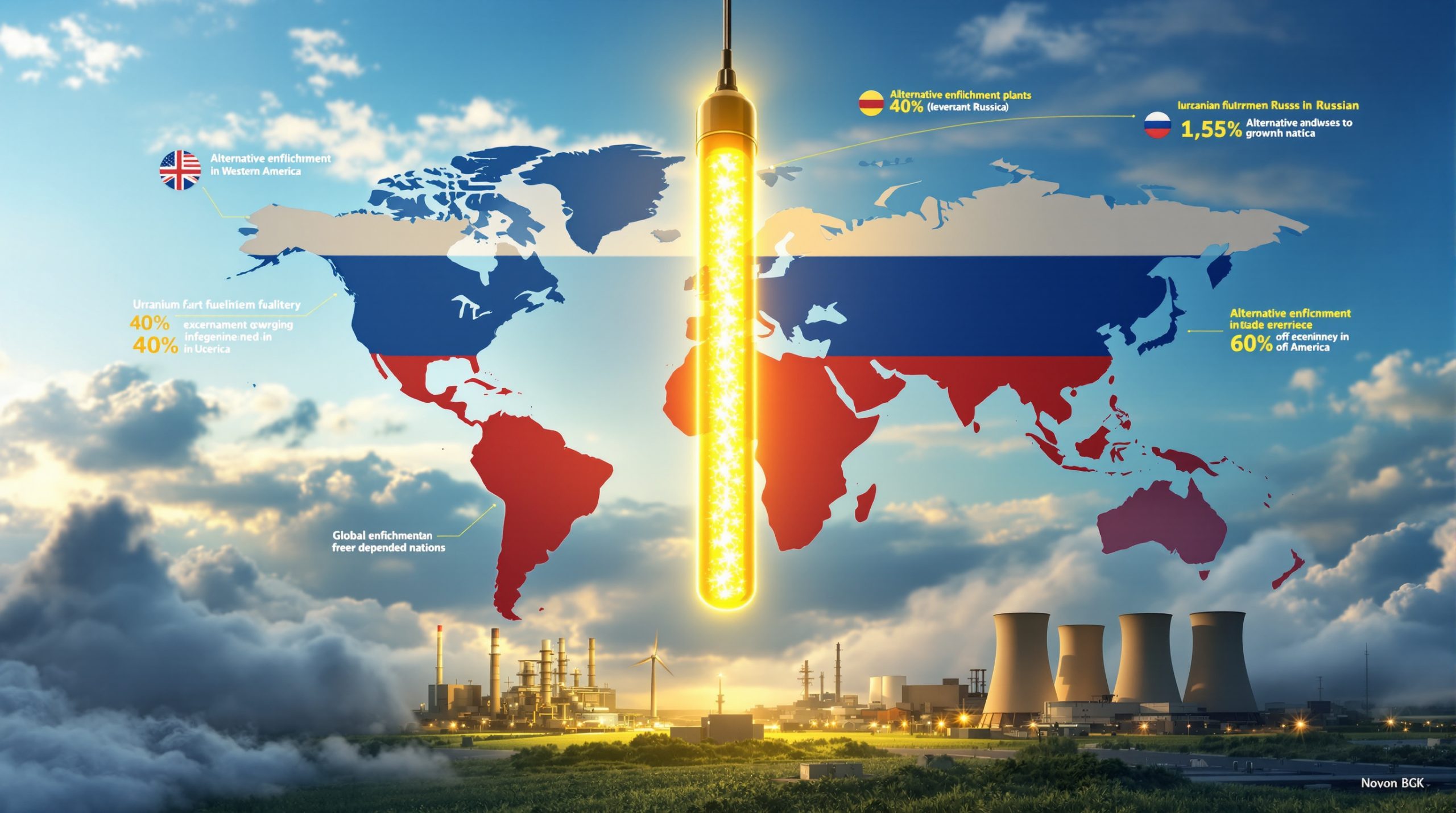How Significant is South Australia's Mining Sector to the State Economy?
South Australia's resources sector has emerged as a cornerstone of the state's economic foundation, contributing a substantial 6.4% to the gross state product. This economic impact is matched by remarkable employment growth, with direct mining jobs surging by an impressive 86% over the past five years. Currently, one in every 23 full-time positions across South Australia is supported by mining and resources activities, demonstrating the sector's expanding influence on both the state's workforce and overall prosperity.
The mining industry's contribution to South Australia extends far beyond conventional measures of economic output and direct employment. The state has witnessed unprecedented export performance in the resources sector, with mining exports reaching a record $7 billion in the most recent financial year. This export success story is led primarily by copper, with both refined copper and concentrates increasing by 17% year-over-year to achieve an unprecedented $4.3 billion in export value.
Key Economic Indicators of South Australian Mining
The mining sector's influence can be measured through several key economic indicators that demonstrate its growing importance to South Australia. Beyond the direct contribution to gross state product, the industry creates significant multiplier effects throughout the broader economy. Each mining job supports approximately 3.5 additional jobs in related industries, from manufacturing and construction to professional services and hospitality.
Regional communities particularly benefit from mining's economic impact. In areas like the Eyre Peninsula, Yorke Peninsula, and Far North regions, mining operations serve as economic anchors, providing stable employment and supporting local businesses. These operations contribute to regional resilience by diversifying economic activities beyond traditional agriculture and tourism sectors.
What Mineral Resources Drive South Australia's Mining Future?
South Australia possesses extraordinary mineral wealth across multiple commodities, positioning the state for sustained growth in the mining sector. This diverse resource base provides multiple pathways for development and helps insulate the industry from single-commodity market fluctuations.
Copper: The Foundation of Growth
South Australia holds approximately 68% of Australia's copper reserves, positioning it as the undisputed national leader in this critical metal. Major deposits include Olympic Dam, Carrapateena, and Prominent Hill, with numerous exploration projects advancing toward development. With global copper demand projected to increase by 70% by 2050, driven primarily by renewable energy technologies and widespread electrification efforts, South Australia's copper resources represent a significant long-term growth opportunity.
The copper industry in South Australia benefits from established infrastructure, processing capabilities, and technical expertise. These advantages reduce development costs for new projects and enhance the competitiveness of existing operations. Recent technological innovations in processing methods have also improved recovery rates and reduced environmental impacts, further strengthening the sector's outlook.
Critical Minerals Portfolio
Beyond copper, South Australia boasts an impressive diversity of mineral resources that are increasingly essential for the critical minerals for energy transition:
-
Uranium: The state holds 79% of Australia's uranium reserves, centered primarily around Olympic Dam and several other deposits. As countries seek low-carbon baseload power options, uranium market dynamics show signs of strengthening.
-
Graphite: With 66% of national graphite resources, South Australia is positioned to supply this essential component for battery anodes and other advanced applications. The Uley and Campoona deposits represent world-class graphite resources.
-
Gold: The state contains 25% of Australia's gold deposits, providing valuable revenue diversification for mining operations. Many copper projects in South Australia contain significant gold credits, enhancing project economics during periods of all‐time high gold prices analysis.
-
Rare Earths: Substantial deposits of these technology-critical elements are being explored and developed across the state. These elements are essential for permanent magnets used in electric vehicles and wind turbines.
-
Magnetite Iron Ore: High-grade magnetite resources position South Australia to participate in the green steel revolution, particularly when combined with the state's renewable energy advantages.
This mineral diversity creates multiple pathways for sectoral growth, particularly as global demand for battery materials and critical minerals continues to accelerate in response to decarbonization efforts worldwide.
How is the Energy Transition Reshaping South Australian Mining?
The global energy transition is fundamentally reshaping mining requirements worldwide, with particularly significant implications for South Australia. The shift toward renewable energy, electrification, and decarbonization is creating unprecedented demand for minerals while simultaneously changing how mining operations are powered and perceived.
Renewable Energy Integration
South Australia has established itself as a renewable energy leader, with 80% of its electricity now generated from renewable sources. This clean energy foundation provides the mining sector with a distinctive competitive advantage in producing lower-carbon minerals—an increasingly important consideration for global customers and investors focused on supply chain sustainability.
Mining operations across the state are capitalizing on this advantage through direct renewable energy agreements, on-site generation, and participation in the broader renewable energy ecosystem. Companies including BHP and OZ Minerals have implemented significant renewable energy projects to reduce both costs and emissions. These initiatives not only improve environmental performance but also enhance energy security and help shield operations from fossil fuel price volatility.
The Decarbonization Opportunity
As SACOME CEO Nicola McFarlane emphasized at a recent industry event: "Decarbonisation doesn't mean less mining – it means more mining." This apparent paradox reflects the mineral-intensive nature of renewable energy technologies, electric vehicles, and energy storage systems. Wind turbines, solar panels, battery storage, and electric motors all require substantially more minerals than their fossil fuel counterparts.
For South Australia, this dynamic creates a distinctive opportunity at the intersection of mineral wealth and clean energy capability. The state can leverage both its diverse mineral endowment and its renewable energy leadership to position itself as a preferred supplier of low-carbon minerals essential for global decarbonization efforts.
Industry experts project that meeting global climate goals could increase demand for critical minerals sixfold by 2040. With its favorable geological conditions and progressive energy policies, South Australia is uniquely positioned to meet this growing demand while benefiting from the global copper supply forecast showing increased market opportunities.
What Government Initiatives Support Mining Expansion?
South Australian state and federal government initiatives have created a supportive environment for mining sector growth through strategic policies, investment attraction programs, and infrastructure development. These coordinated efforts have helped accelerate project development and enhance the sector's competitiveness.
Green Iron and Steel Strategy
The South Australian government has developed a comprehensive strategy to leverage the state's mineral resources and renewable energy advantages to develop green iron and steel production capabilities. This forward-looking initiative aims to capture more value from the state's resources by moving up the processing value chain rather than simply exporting raw materials.
The strategy encompasses several interconnected elements:
- Research and development funding for low-carbon steel technologies
- Pilot plant support for proving commercial viability
- Skills development programs to build workforce capabilities
- Infrastructure coordination to enable efficient production and export
By focusing on higher-value processing opportunities, the strategy aims to multiply the economic benefits of mineral resources while simultaneously supporting global decarbonization efforts.
Infrastructure Development
Strategic infrastructure corridors are being planned and developed to enhance the mining sector's competitiveness by reducing transportation costs and improving export logistics. These corridors will connect mining regions with processing facilities and export terminals, creating an integrated resources supply chain.
Key infrastructure projects include:
- Port expansion at Whyalla and Port Adelaide
- Rail network upgrades in mining regions
- Water security initiatives for processing requirements
- Transmission network enhancements to deliver renewable energy to mining operations
These coordinated infrastructure investments reduce barriers to project development and help unlock resources that might otherwise remain stranded due to logistical challenges, as highlighted in the South Australian government's resources strategy.
How is Public Perception Influencing Mining Development?
Public perception and community acceptance have emerged as critical factors in mining development. The industry recognizes that successful project advancement increasingly depends on securing and maintaining social license to operate through meaningful engagement, demonstrated benefits, and responsible practices.
Building Community Support
SACOME has launched the 'Resourceful SA' campaign to build public awareness and support for the mining industry. This initiative has already generated 33.8 million impressions, reflecting the industry's commitment to transparent communication with communities and stakeholders.
The campaign highlights:
- Economic benefits including jobs and community investment
- Environmental management practices and rehabilitation success stories
- Technological innovations reducing impacts and improving safety
- Industry contributions to regional development and community infrastructure
By showcasing modern mining practices and benefits, the campaign aims to address misconceptions and build broader public understanding of the industry's evolution.
Social License Priorities
Industry leaders recognize that maintaining community trust is essential for securing the sector's future growth. As mining activities expand, companies are increasingly focusing on environmental stewardship, community engagement, and demonstrating tangible local benefits from resource development.
Mining companies are implementing more sophisticated approaches to community relations, including:
- Early and continuous engagement throughout project lifecycles
- Transparent communication about impacts and mitigation measures
- Local procurement and employment programs
- Indigenous participation and partnership agreements
- Environmental monitoring with community involvement
These efforts reflect recognition that community expectations have evolved, and that social performance now represents a critical business risk that requires proactive management.
What Economic Benefits Does Mining Generate Nationally?
South Australia's mining industry contributes significantly to broader national economic outcomes through tax revenues, employment creation, and supply chain relationships. Understanding these national contributions provides important context for the sector's overall value.
Tax and Royalty Contributions
The mining industry has delivered $394.6 billion in taxes and royalties across Australia over the past decade. In the most recent fiscal year alone, the sector contributed $32.5 billion in company tax and $26.9 billion in royalties, funding essential public services and infrastructure.
These substantial fiscal contributions support:
- Healthcare and education services
- Transport infrastructure development
- Social welfare programs
- Defense and national security
- Research and innovation initiatives
The stability and scale of these contributions highlight mining's role as a cornerstone industry supporting Australia's high living standards and public services.
Employment Scale
Nationally, the mining industry directly employs more than 303,000 Australians, with thousands more in supporting industries and supply chains. South Australia's mining workforce growth reflects this broader national trend of increasing employment opportunities in the resources sector.
The industry creates particularly valuable employment opportunities through:
- Above-average wages supporting household prosperity
- Career development pathways for technical professionals
- Skills development transferable to other industries
- Increasing opportunities for diverse workforce participation
- Regional employment stabilizing community populations
These employment benefits extend well beyond mine sites themselves, supporting manufacturers, service providers, and knowledge workers throughout the economy.
How Are International Markets Influencing South Australian Mining?
South Australia's mining sector operates within global commodity markets that influence development decisions, investment timing, and operational strategies. Understanding these international dynamics is essential for contextualizing the sector's opportunities and challenges.
Export Growth Trajectories
South Australia's record $7 billion in mining exports demonstrates the strong international demand for the state's resources. Copper exports, which increased 17% to reach $4.3 billion, highlight the growing global market for this essential industrial and technology metal.
Market analysts identify several factors driving this export growth:
- Infrastructure development across emerging economies
- Manufacturing recovery in established industrial centers
- Technological adoption requiring specialized materials
- Supply constraints in competing jurisdictions
- Quality advantages of South Australian mineral products
These export trends reflect fundamental demand growth rather than cyclical price movements, suggesting sustainable long-term market opportunities.
Strategic Mineral Positioning
As countries worldwide implement critical mineral strategies to secure supply chains for technologies like renewable energy and defense systems, South Australia's diverse mineral portfolio becomes increasingly strategically valuable. This global context enhances investment attractiveness for the state's mining projects.
International developments supporting South Australia's position include:
- Free trade agreements improving market access
- Strategic partnership initiatives with key trading partners
- Supply diversification efforts by manufacturing nations
- Critical mineral designation expanding financing options
- Growing premium for responsibly produced minerals
These international factors combine to create favorable conditions for investment in South Australian mining projects with strong environmental, social and governance credentials.
What Future Developments Will Shape South Australian Mining?
The future of South Australia's mining sector will be influenced by technological evolution, changing market requirements, and emerging operational models. Forward-looking companies are positioning themselves to capitalize on these mining industry evolution trends through strategic investments and capability development.
Exploration Investment Growth
Continued investment in mineral exploration will be crucial for identifying and developing new resource projects. Recent exploration success and supportive government policies are expected to accelerate discovery rates and project pipelines.
The exploration sector is evolving through:
- Advanced geophysical techniques improving target identification
- Machine learning applications enhancing data interpretation
- Collaborative exploration initiatives sharing knowledge and costs
- Junior company innovation bringing fresh approaches
- Deeper targeting unlocking resources below conventional depths
These advancements promise to refresh the project pipeline and ensure continued industry growth beyond currently identified resources.
Processing and Value Addition
Developing more downstream processing capacity within South Australia represents a significant growth opportunity. By converting raw minerals into higher-value products before export, the state can capture more economic benefits from its natural resources.
Emerging processing opportunities include:
- Copper refining and product manufacturing
- Battery material preparation and precursor production
- Rare earth separation and processing
- Green steel and iron production utilizing renewable energy
- Advanced materials development for specialized applications
These value-addition activities multiply the economic impact of mining operations while reducing transportation costs and environmental footprints.
Technology Integration
Adoption of advanced technologies—including automation, artificial intelligence, and precision mining techniques—will enhance productivity, safety, and environmental performance across South Australia's mining operations, driving long-term competitiveness.
Key technological developments include:
- Autonomous equipment reducing operational risks and improving efficiency
- Digital twins enabling optimization and scenario planning
- Precision blasting minimizing waste and improving recovery
- Electrification reducing emissions and improving underground environments
- Real-time monitoring enhancing environmental management
These technologies transform mining from a primarily extractive activity into a sophisticated manufacturing-like process with improved control, predictability, and performance.
South Australia's Mining Renaissance
South Australia is experiencing a mining renaissance driven by its exceptional mineral endowment, renewable energy advantages, and strategic positioning within global critical mineral markets. With copper as its flagship commodity and a diverse portfolio of critical minerals supporting the global energy transition, the state is poised for sustained mining sector growth.
The combination of government support, industry innovation, and growing international demand creates a favorable environment for exploring the growth potential of South Australian mining. As Treasurer and Mines Minister Tom Koutsantonis noted, South Australia is "a state on the move" with mining established as "a pillar of the South Australian economy."
This convergence of factors—mineral wealth, clean energy, supportive policies, and global demand—positions South Australia to significantly grow its mining sector's contribution to both state and national economies in the coming years. The state stands at the intersection of two powerful global trends: increasing material requirements for the energy transition and growing preference for responsibly produced resources with minimal environmental footprints.
For investors, policymakers, and communities alike, South Australia's mining sector represents an opportunity to participate in a growth industry aligned with both economic development imperatives and sustainability objectives. As global decarbonization efforts accelerate, the state's combination of resources and capabilities will likely become increasingly valuable, reinforcing its position as an emerging mining powerhouse.
Ready to Spot the Next Major Mineral Discovery in Australia?
Discover why South Australia's mining renaissance presents exceptional investment opportunities by exploring Discovery Alert's dedicated discoveries page, where our proprietary Discovery IQ model delivers real-time alerts on significant ASX mineral discoveries, giving you an immediate edge in the market. Visit https://discoveryalert.com.au/discoveries/ today to position yourself ahead of the curve.




